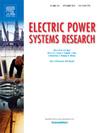A hybrid optimal power flow model for transmission and distribution networks
IF 3.3
3区 工程技术
Q2 ENGINEERING, ELECTRICAL & ELECTRONIC
引用次数: 0
Abstract
This paper presents a fast and accurate optimization technique for optimal power flow (OPF) that can be conveniently applied to transmission and distribution systems. The method is based on the branch flow and DC optimal power flow (DCOPF) models. As the branch flow model is independent of the bus voltage angle, the model needs further development to enable use in meshed transmission systems. Thus, this paper adds the bus voltage angle constraint as a key constraint to the branch flow model so that the voltage angle can also be used in the power flow model in addition to the voltage magnitude control. The problem is based on second-order programming and modeled as a quadratically-constrained programming (QCP) problem solved using the CPLEX solver in GAMS. The functionality of the proposed model is tested utilizing four standard distribution systems, three transmission systems, a combined transmission-distribution network. The studied distribution systems include the 33-bus, 69-bus, 118-bus distribution (118-D) test systems, and 730-bus distribution system (730-D). Additionally, the studied transmission systems include 9-bus, 30-bus, and 118-bus transmission (118-T) test systems. The combined transmission-distribution system included the 9-bus transmission system with three connected distribution systems. The simulation results obtained from the developed technique are compared to those obtained from a conventional optimal flow model. The power losses and the absolute error of the solution are used as the two metrics to compare the methods’ performance for distribution networks. The absolute error of the solution derived from the proposed hybrid OPF compared to MATPOWER for the 33-bus system is 0.00198 %. For the 69-bus system, the error is 0.00044 %. In addition, for the 118-D and 730-D systems, the absolute errors are 0.0026 %, and 0.05 %, respectively. For the transmission network, the operating costs and the solution absolute error are the two metrics used for comparing the proposed hybrid OPF model and MATPOWER. The results indicate the superior performance of the hybrid OPF model to the Newton-Raphson method in MATPOWER in terms of operating cost. In this regard, cost reductions relative to values given by MATPOWER are 0.0005 %, 0.838 %, and 0.015 %, for the 9-bus, 30-bus, and 118-T systems, respectively. The simulation studies demonstrate the performance of the presented branch flow-based model in solving the OPF problem with accurate results.
求助全文
约1分钟内获得全文
求助全文
来源期刊

Electric Power Systems Research
工程技术-工程:电子与电气
CiteScore
7.50
自引率
17.90%
发文量
963
审稿时长
3.8 months
期刊介绍:
Electric Power Systems Research is an international medium for the publication of original papers concerned with the generation, transmission, distribution and utilization of electrical energy. The journal aims at presenting important results of work in this field, whether in the form of applied research, development of new procedures or components, orginal application of existing knowledge or new designapproaches. The scope of Electric Power Systems Research is broad, encompassing all aspects of electric power systems. The following list of topics is not intended to be exhaustive, but rather to indicate topics that fall within the journal purview.
• Generation techniques ranging from advances in conventional electromechanical methods, through nuclear power generation, to renewable energy generation.
• Transmission, spanning the broad area from UHV (ac and dc) to network operation and protection, line routing and design.
• Substation work: equipment design, protection and control systems.
• Distribution techniques, equipment development, and smart grids.
• The utilization area from energy efficiency to distributed load levelling techniques.
• Systems studies including control techniques, planning, optimization methods, stability, security assessment and insulation coordination.
 求助内容:
求助内容: 应助结果提醒方式:
应助结果提醒方式:


